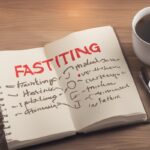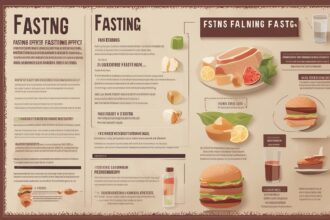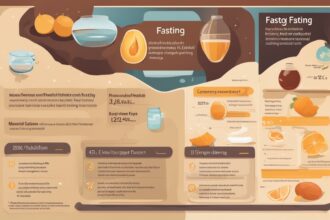Hey there, fellow health enthusiasts! If you’ve been curious about fasting—whether it’s intermittent fasting, water fasting, or another method—you’ve likely heard about the incredible fasting benefits like weight loss, improved mental clarity, and better metabolic health. But let’s be real: fasting isn’t all sunshine and rainbows. There are side effects that can catch you off guard if you’re not prepared. In this comprehensive guide, we’re diving deep into the potential downsides of fasting, balancing them with the well-documented perks, and arming you with practical tips to fast safely. Whether you’re a newbie or a seasoned faster, understanding these effects is key to making fasting work for you. Let’s break it all down with a mix of science, personal insights, and actionable advice.
What Are the Common Side Effects of Fasting?
While the fasting benefits often steal the spotlight, it’s crucial to acknowledge that your body might not immediately adapt to skipping meals or restricting calories. Fasting can trigger a range of side effects, especially if you jump in without preparation. These reactions are often temporary as your body adjusts, but they can be uncomfortable. Here are some of the most common side effects people experience during fasting, backed by research and real-world feedback.
- Hunger and Cravings: This one’s a no-brainer. When you stop eating for extended periods, your stomach might growl louder than a bear in the woods. Hunger pangs are often strongest in the first few days as your body adjusts to a new eating pattern (Mattson et al., 2017).
- Fatigue and Low Energy: Without a steady supply of calories, you might feel sluggish or tired, especially if you’re new to fasting. This is often due to a drop in blood sugar levels or dehydration (Johnstone, 2015).
- Headaches: Dehydration and caffeine withdrawal (if you’re cutting out coffee) are common culprits for fasting-induced headaches. Studies suggest staying hydrated can help mitigate this (Torelli et al., 2010).
- Irritability: Ever heard of being “hangry”? Fasting can mess with your mood, especially if you’re not used to it. Low blood sugar can affect brain function and make you snap at the smallest things (Benton et al., 2016).
How Fasting Affects Your Body: The Science Behind the Side Effects
Understanding why these side effects happen can help you manage them better while still reaping the fasting benefits. When you fast, your body switches from using glucose (from food) as its primary energy source to burning stored fat through a process called ketosis. This metabolic shift is fantastic for weight loss and insulin sensitivity, but it can also throw your system into temporary chaos. For instance, the initial drop in blood sugar can cause dizziness or fatigue until your body adapts (Anton et al., 2018). Additionally, fasting impacts hormones like ghrelin (the hunger hormone), which spikes during fasting windows, making you feel ravenous. Electrolyte imbalances from reduced food and water intake can also contribute to headaches and muscle cramps if not addressed. The good news? Most of these effects lessen over time as your body gets accustomed to fasting routines.
Who Should Be Cautious About Fasting?
Not everyone is a good candidate for fasting, even with its promising health benefits of fasting. Certain groups need to approach it with caution or avoid it altogether due to heightened risks of adverse side effects. If you fall into any of these categories, consult a healthcare provider before starting any fasting regimen. It’s better to be safe than sorry when it comes to your health.
- Pregnant or Breastfeeding Women: Fasting can deprive both mother and baby of essential nutrients, potentially affecting development and milk supply.
- Individuals with Medical Conditions: People with diabetes, eating disorders, or low blood pressure may experience dangerous fluctuations in blood sugar or energy levels (Grajower & Horne, 2019).
- Children and Teens: Growing bodies need consistent nutrition, and fasting can interfere with development.
- Those on Medications: Some medications require food intake to work effectively or avoid stomach irritation, so fasting might not be compatible.
Tips to Minimize Fasting Side Effects While Maximizing Benefits
Now that we’ve covered the potential downsides, let’s talk solutions. The advantages of fasting—like improved autophagy (cellular cleanup) and reduced inflammation—are worth pursuing, but only if you can manage the hiccups along the way. I’ve personally tried fasting for a few years now, and these strategies have been game-changers in reducing discomfort while enhancing the positive effects. Give them a shot and see what works for you!
First, start slow. If you’re new to fasting, don’t dive into a 72-hour water fast right away. Begin with a 12:12 schedule (12 hours fasting, 12 hours eating) and gradually increase your fasting window. This gives your body time to adapt without overwhelming it. Second, hydration is non-negotiable. Drink plenty of water during your fasting periods to combat headaches and fatigue—add a pinch of salt if you’re feeling lightheaded to replenish electrolytes. Third, plan your meals wisely. Break your fast with nutrient-dense foods like vegetables, lean proteins, and healthy fats to avoid digestive upset or blood sugar spikes. Lastly, listen to your body. If you feel unwell beyond the usual adjustment period, stop and reassess. Fasting should feel challenging but not unbearable.
Balancing the Risks and Rewards of Fasting
Let’s weigh the pros and cons. The fasting benefits are backed by solid research: studies show intermittent fasting can improve insulin sensitivity, support weight management, and even promote longevity by reducing oxidative stress (Mattson et al., 2017). But the side effects we’ve discussed—hunger, fatigue, mood swings—can be dealbreakers if not managed properly. The trick is finding a fasting style that aligns with your lifestyle and health goals. For instance, if you’re an active person, a 16:8 intermittent fasting plan might work better than prolonged fasting, as it allows for regular fueling around workouts. Remember, fasting isn’t a one-size-fits-all solution. Experiment with different methods, track how your body responds, and adjust as needed to maximize the positive effects of fasting.
When to Seek Help: Red Flags During Fasting
While most fasting side effects are mild and temporary, there are warning signs that indicate something’s off. If you experience severe dizziness, fainting, extreme weakness, or persistent nausea, it’s time to stop fasting and seek medical advice. These could signal dehydration, dangerously low blood sugar, or an underlying condition exacerbated by fasting. I’ve had moments during longer fasts where I felt “off,” and stepping back to eat a small meal made all the difference. Trust your instincts—pushing through serious discomfort isn’t worth the risk, even if you’re chasing those fasting health benefits. Always prioritize your well-being over sticking to a strict fasting schedule.
In wrapping up, fasting can be a powerful tool for health and wellness, offering a range of fasting benefits from weight loss to improved metabolic markers. However, it’s not without its challenges. Side effects like hunger, fatigue, and irritability are common, especially for beginners, but they can often be managed with the right preparation and mindset. By starting slowly, staying hydrated, and listening to your body, you can minimize discomfort and make the most of fasting’s potential. Remember that fasting isn’t for everyone, and it’s okay to take breaks or seek professional guidance if needed. At the end of the day, the goal is to improve your health, not stress yourself out. So, are you ready to give fasting a try, or tweak your current approach? Drop your thoughts or experiences in the comments—I’d love to hear how fasting has worked (or not worked) for you!
References
- Anton, S. D., Moehl, K., Donahoo, W. T., Marosi, K., Lee, S. A., Mainous, A. G., … & Mattson, M. P. (2018). Flipping the metabolic switch: Understanding and applying the health benefits of fasting. Obesity, 26(2), 254-268. https://doi.org/10.1002/oby.22065
- Benton, D., Jenkins, K. T., Watkins, H. T., & Young, H. A. (2016). Minor degree of hypohydration adversely influences cognition: A mediator analysis. American Journal of Clinical Nutrition, 104(3), 603-612. https://doi.org/10.3945/ajcn.116.132605
- Grajower, M. M., & Horne, B. D. (2019). Clinical management of intermittent fasting in patients with diabetes mellitus. Nutrients, 11(4), 873. https://doi.org/10.3390/nu11040873
- Johnstone, A. (2015). Fasting for weight loss: An effective strategy or latest dieting trend? International Journal of Obesity, 39(5), 727-733. https://doi.org/10.1038/ijo.2014.214
- Mattson, M. P., Longo, V. D., & Harvie, M. (2017). Impact of intermittent fasting on health and disease processes. Ageing Research Reviews, 39, 46-58. https://doi.org/10.1016/j.arr.2016.10.005
- Torelli, P., Evangelista, A., & Bini, A. (2010). Fasting headache: A review of the literature and new hypotheses. Headache: The Journal of Head and Face Pain, 50(5), 775-780. https://doi.org/10.1111/j.1526-4610.2009.01542.x






